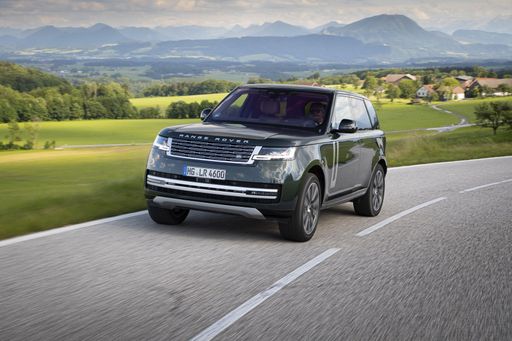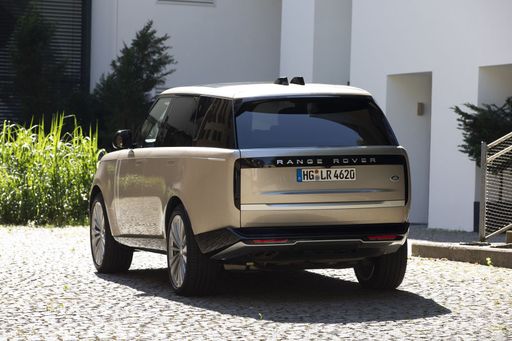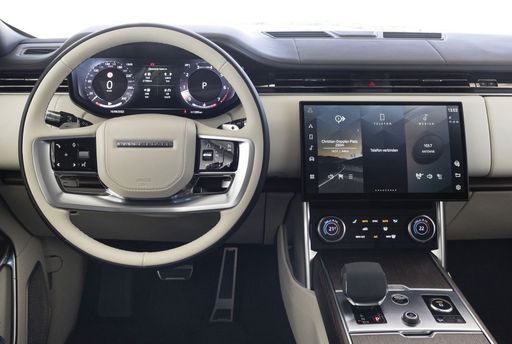Land Rover Range Rover vs Rolls-Royce Cullinan – Which one offers the better deal?
Compare performance, boot capacity, efficiency and price at a glance.
Find out which car is the better choice for you – Land Rover Range Rover or Rolls-Royce Cullinan?
Costs and Efficiency:
When it comes to price and running costs, the biggest differences usually appear. This is often where you see which car fits your budget better in the long run.
Land Rover Range Rover has a significantly advantage in terms of price – it starts at 122700 £, while the Rolls-Royce Cullinan costs 263500 £. That’s a price difference of around 140743 £.
Fuel consumption also shows a difference: Land Rover Range Rover manages with 2.70 L and is therefore convincingly more efficient than the Rolls-Royce Cullinan with 15.20 L. The difference is about 12.50 L per 100 km.
Engine and Performance:
Under the bonnet, it becomes clear which model is tuned for sportiness and which one takes the lead when you hit the accelerator.
When it comes to engine power, the Land Rover Range Rover has a hardly perceptible edge – offering 615 HP compared to 600 HP. That’s roughly 15 HP more horsepower.
In acceleration from 0 to 100 km/h, the Land Rover Range Rover is barely noticeable quicker – completing the sprint in 4.50 s, while the Rolls-Royce Cullinan takes 4.90 s. That’s about 0.40 s faster.
In terms of top speed, the Land Rover Range Rover performs minimal better – reaching 261 km/h, while the Rolls-Royce Cullinan tops out at 250 km/h. The difference is around 11 km/h.
There’s also a difference in torque: Rolls-Royce Cullinan pulls a bit stronger with 900 Nm compared to 800 Nm. That’s about 100 Nm difference.
Space and Everyday Use:
Cabin size, boot volume and payload all play a role in everyday practicality. Here, comfort and flexibility make the difference.
Seats: Land Rover Range Rover offers distinct more seating capacity – 7 vs 5.
In curb weight, Land Rover Range Rover is minimal lighter – 2504 kg compared to 2660 kg. The difference is around 156 kg.
In terms of boot space, the Land Rover Range Rover offers noticeable more room – 818 L compared to 555 L. That’s a difference of about 263 L.
In maximum load capacity, the Land Rover Range Rover performs slightly better – up to 2176 L, which is about 246 L more than the Rolls-Royce Cullinan.
When it comes to payload, Land Rover Range Rover hardly perceptible takes the win – 846 kg compared to 840 kg. That’s a difference of about 6 kg.
Who wins the race?
The Land Rover Range Rover proves to be leaves the rival little chance and therefore becomes our DriveDuel Champion!
Land Rover Range Rover is the better all-rounder in this comparison.

Land Rover Range Rover
Land Rover Range Rover
The Land Rover Range Rover epitomises luxury and capability in the realms of off-road vehicles. Its elegant design seamlessly marries sophistication with ruggedness, making it equally suitable for urban environments and challenging terrains. Inside, passengers are treated to a plush interior with premium materials and cutting-edge technology that ensure a comfortable and connected driving experience.
details @ media.landrover.com
@ media.landrover.com
 @ media.landrover.com
@ media.landrover.com
 @ media.landrover.com
@ media.landrover.com
 @ media.landrover.com
@ media.landrover.com
Rolls-Royce Cullinan
The Cullinan seamlessly combines the hallmark luxury of Rolls-Royce with the rugged versatility of an SUV, making it a true standout in the automotive landscape. Its impeccably crafted interior envelops passengers in a serene atmosphere, complemented by advanced technology and unparalleled comfort. With its commanding presence on the road, the Cullinan redefines what it means to travel in style without compromising on capability.
details

|
|
|
|
|
Costs and Consumption |
|
|---|---|
|
Price
122700 - 244700 £
|
Price
263500 - 312700 £
|
|
Consumption L/100km
2.7 - 11.7 L
|
Consumption L/100km
15.2 - 16.3 L
|
|
Consumption kWh/100km
-
|
Consumption kWh/100km
-
|
|
Electric Range
116 - 117 km
|
Electric Range
-
|
|
Battery Capacity
31.80 kWh
|
Battery Capacity
-
|
|
co2
62 - 265 g/km
|
co2
344 - 370 g/km
|
|
Fuel tank capacity
71 - 90 L
|
Fuel tank capacity
100 L
|
Dimensions and Body |
|
|---|---|
|
Body Type
Off-Roader
|
Body Type
SUV
|
|
Seats
5 - 7
|
Seats
5
|
|
Doors
5
|
Doors
4
|
|
Curb weight
2504 - 2810 kg
|
Curb weight
2660 kg
|
|
Trunk capacity
212 - 818 L
|
Trunk capacity
555 L
|
|
Length
5052 - 5258 mm
|
Length
5341 mm
|
|
Width
2047 mm
|
Width
2000 mm
|
|
Height
1870 mm
|
Height
1835 mm
|
|
Max trunk capacity
1841 - 2176 L
|
Max trunk capacity
1930 L
|
|
Payload
589 - 846 kg
|
Payload
840 kg
|
Engine and Performance |
|
|---|---|
|
Engine Type
Plugin Hybrid, Petrol MHEV, Diesel MHEV
|
Engine Type
Petrol MHEV, Petrol
|
|
Transmission
Automatic
|
Transmission
Automatic
|
|
Transmission Detail
Automatic Gearbox
|
Transmission Detail
Automatic Gearbox
|
|
Drive Type
All-Wheel Drive
|
Drive Type
All-Wheel Drive
|
|
Power HP
300 - 615 HP
|
Power HP
571 - 600 HP
|
|
Acceleration 0-100km/h
4.5 - 6.6 s
|
Acceleration 0-100km/h
4.9 - 5.2 s
|
|
Max Speed
218 - 261 km/h
|
Max Speed
250 km/h
|
|
Torque
650 - 800 Nm
|
Torque
850 - 900 Nm
|
|
Number of Cylinders
6 - 8
|
Number of Cylinders
12
|
|
Power kW
221 - 452 kW
|
Power kW
420 - 441 kW
|
|
Engine capacity
2997 - 4395 cm3
|
Engine capacity
6749 cm3
|
General |
|
|---|---|
|
Model Year
2025
|
Model Year
2020
|
|
CO2 Efficiency Class
B, G
|
CO2 Efficiency Class
G
|
|
Brand
Land Rover
|
Brand
Rolls-Royce
|
What drive types are available for the Land Rover Range Rover?
Available configurations include All-Wheel Drive.
The prices and data displayed are estimates based on German list prices and may vary by country. This information is not legally binding.
